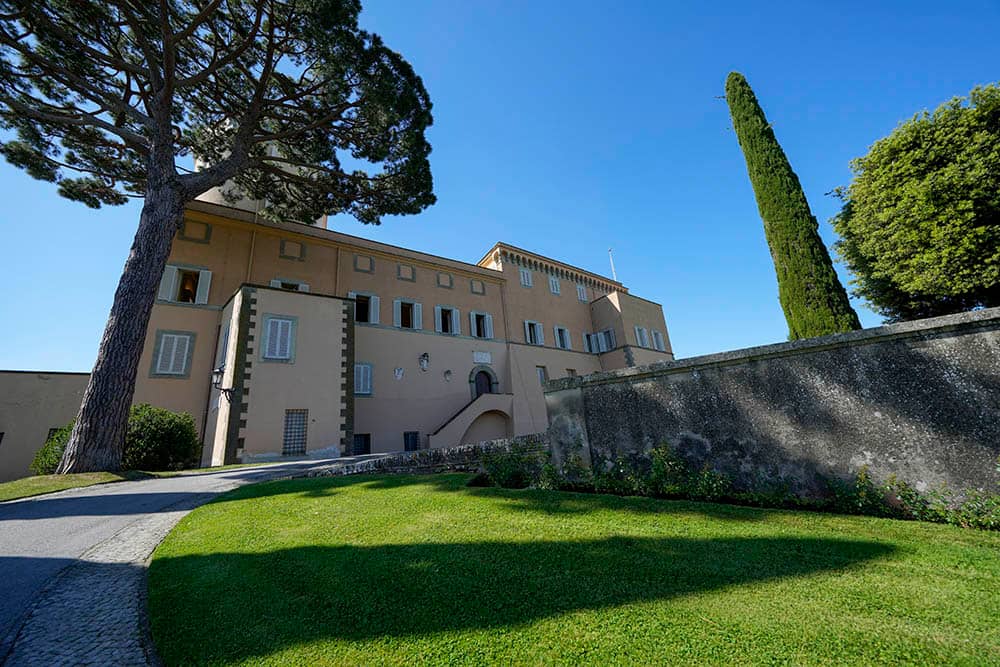ROME – Notre Dame is basically the Texas of the American Catholic Church, meaning it tends to operate on the principle of “go big or go home.” They don’t do anything small under the Golden Dome, and that’s certainly true of a major series of events this academic year developed by Father John Jenkins, ND’s president, on the clerical sexual abuse crisis.
The series kicks off Wednesday, Sept. 25, with a panel titled “The Church Crisis: Where Are We Now?” to be held on the ND campus and livestreamed on the university web site as well as on Crux. The guiding idea is to pivot the conversation about the scandals away from rage and toward recovery.
To headline the event, Notre Dame easily could have relied on Peter Steinfels, a veteran Catholic journalist and thinker who’s covered the abuse crisis from the beginning and who penned a brilliant dissection in January of the bombshell Pennsylvania grand jury report.
Or, they could have featured Kathleen McChesney, a former FBI executive who led the U.S. bishops’ office for child protection after the initial eruption of the crisis in 2002, where she developed and oversaw a national mechanism to ensure that dioceses comply with civil laws and internal policies.
Such an event obviously needs to hear the voice of survivors, so Notre Dame also could have made someone such as Juan Carlos Cruz the star attraction. Cruz was a victim of Fernando Karadima, Chile’s most notorious pedophile priest, and almost single-handedly blew open the doors on what’s now considered perhaps the most intense abuse scandal anywhere in the Catholic world.
The series also needs to bring leadership into the conversation, so Notre Dame could have invited a heavyweight American prelate to keynote the inaugural event, such as Archbishop William Lori of Baltimore. He’s a former member of the bishops’ committee on child protection, and someone with direct experience of clean-up efforts given his role in the Diocese of Wheeling, West Virginia, and the scandals surrounding former Bishop Michael Bransfield.
As I say, any one of those A-list figures easily would have been enough to anchor a major event – so, naturally, Notre Dame went out and got all four. It’s a virtually unprecedented ensemble, and together they’re a recipe for a memorable evening indeed.
When I was on campus in March, I dropped in to see Jenkins and he laid out his vision for this series.
First, he told me, he wants Notre Dame to be at the service of the Church, and his instinct was what the Church needs right now is a way to move past anger, without ever denying the reasons people have been outraged, towards a more constructive focus on what real recovery would look like.
Organizing events is one way to do that, Jenkins explained, especially given Notre Dame’s unique capacity to convene, since it’s awfully hard for anyone to say no to the country’s flagship Catholic university. One proof of the point is that the series will continue Nov. 13 with an event featuring Archbishop Charles Scicluna of Malta, the Vatican’s go-to figure on the abuse crisis and probably the most experienced reformer in the Church at any level.
It was Scicluna who brought down the late Marcial Maciel Degollado, the disgraced founder of the Legion of Christ, under Pope Benedict XVI, and it was also Scicluna to whom Pope Francis turned to lead an investigation into the Chilean crisis. To have Scicluna at Notre Dame thus speaks volumes about the seriousness of the conversation.
Jenkins said he wants Notre Dame to be part of recovery efforts in other ways too, including engaging its research capacities. One expression of that side of things is a new, first-ever survey of Catholic seminaries on the issue of sexual harassment to be released by the university’s McGrath Institute for Church Life in conjunction with the Sept. 25 event.
Jenkins recently announced that the President’s Office will provide up to $1 million in the next three years to fund research projects that address issues emerging from the crisis. He told me it’s important to him that this effort make a difference – that it not end up, both literally and figuratively, as a merely “academic” enterprise.
In that sense, the ND initiative is a welcome break from the tendency in Catholic life to move in silos – the universities doing their thing, the hospitals theirs, religious orders out on their own, the bishops doing something different, and so on. Occasionally those players work at cross-purposes, but more often they simply fail to take advantage of opportunities to combine energies.
Jenkins is determined to break out of that isolation, consolidating Notre Dame’s profile as one of the places where the whole Church, not just one piece of it, does its thinking.
Excited by the potential, I volunteered Crux’s services to help beat the drum about the series. Among other things, I’ll be emceeing the events on Sept. 25 and Nov. 13, doing my best to keep things moving and otherwise staying out of the way. (The fact that both events happen to coincide with home games for the Fighting Irish, against Virginia and Navy, is just a happy accident, I swear.)
In the news business, you rarely see the big stories coming. More often, reporters have to be counter-punchers. We’re pummeled by unforeseen developments at unpredictable moments, and then we scramble to react.
In this case, however, we know precisely where and when the story is happening – the DeBartolo Performing Arts Center at the University of Notre Dame on Sept. 25 at 7:00 p.m. Eastern. Either in-person or on-line, it shapes up as one of those can’t-miss moments.















